2018 CDC U.S. TB Elimination Champions
Collaborating with public health partners, health care providers, and community organizations
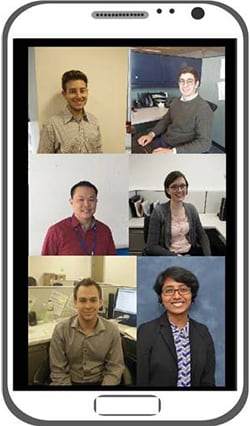
The New York City (NYC) Health Department, Columbia University, and CDC are collaborating to conduct the eDOT Study; a randomized controlled trial comparing traditional in-person directly observed therapy (DOT) with electronic forms of DOT (eDOT) for tuberculosis (TB) treatment. The eDOT Study’s Front Line Team works in tandem with the staff in four public health TB clinics. Study team members work alongside TB clinic staff to provide eDOT, collect information from patients participating in the study, record data in the study database, and complete numerous tasks associated with day-to-day study operations. Through their interactions with study participants, members of the team have also assisted clinic staff in their efforts to direct patients to appropriate services and enhance patients’ overall experience in the clinic. The team’s collaborative relationship with clinic staff has resulted in a successful integration of the study in the clinics’ standard operating practice so it is least disruptive to the clinic flow and patient care.
Since the study began enrolling patients in July 2017, information related to more than 4,500 individual doses of medication have been recorded. This documentation includes information regarding the proportion of medication doses directly observed by DOT versus eDOT; how frequently issues arise that impede DOT and eDOT; patient adherence to DOT schedules; and patient preferences. Over the course of the study, information related to more than 25,000 doses of medication will be documented. Through the study, the team has expanded the use of eDOT in the NYC TB clinics and increased the proportion of patients on eDOT. Moreover, team members have collected information on the cost of DOT to both the TB program and the patient. This will identify financial barriers to DOT in an effort to identify practical solutions.
The information collected through this study will contribute to the knowledge base surrounding digital health interventions and help to inform future policies and procedures related to eDOT. Further, the eDOT study team’s experience in expanding the use of eDOT in a program setting can be shared with other TB programs seeking to implement or expand eDOT. Data collection tools, scripts, and questionnaires developed/edited by the eDOT study team may also serve as guides for other programs using eDOT or other digital health interventions. Finally, this group serves as a model for how a study team can successfully collaborate with existing clinic staff to benefit the TB program, its patients, and the study.
The eDOT Study Front Line Team includes:
New York City Department of Health & Mental Hygiene, Bureau of Tuberculosis Control: Chee Kin Lam, MPH; Anila Thomas, MPH; Lauren Da Fonte, MPH
Columbia University: Marco Salerno, MPH; Matt Dias, MS; Mike Reaves, MS; Sarah J. Kiskadden-Bechtel, MS
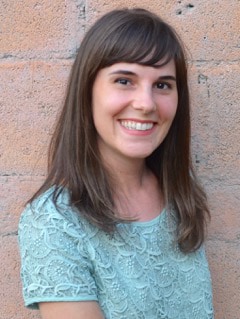
Some people fly under the radar doing amazing work for years. They quietly fill a need that others have not realized. They are champions and change agents. Liz Stapf is not only a TB survivor, but also a TB champion and change agent. In 2011, Liz started a Facebook page simply called, TB Support Group – Advice, Sharing, and Info about Tuberculosis. Without any fanfare, while on TB treatment, she nurtured a safe online space where she conversed with those affected by TB about this long and often lonely journey. Since 2011, she has supported hundreds of people in the United States and around the world through their TB experience. Her goals were “To create a safe and supportive place; offer advice from others’ experience and my own; to be a friend and listening ear; bring others together to support and connect with one another; and be honest and open about the ups and downs of treatment and post-treatment recovery. “Liz also shares her insights as a TB Photovoice Board member. Liz is an advocate at the national level fighting for TB resources.
In 2017, Liz started a new private support group on Facebook called TB Support- Private Community and after 5 months, there are over 200 members. The advantage of this private group is that it creates a safe community for people to ask questions and talk about their diagnosis with others without having to worry about stigma from their friends or communities. Many of the posts receive over 30 responses from people with valuable advice or simply offering understanding. Both Facebook pages have a variety of TB experiences represented. These varied experiences lead to an amazing wealth of knowledge and support. In Liz’s words, “TB is a serious public health problem, it is fought and controlled. But equally, TB is a private health problem, a problem that is suffered at home, often alone, in the mind as well as in the body, a problem which makes support and community necessary in our fight to make TB and the isolation it brings with it a thing of the past.”
Liz encourages health care providers to be open with their patients regarding topics that are frequently discussed on these online resources, such as questions related to side effects; what to expect during and after treatment; and the topic of depression and stigma. Many people write to say, “No one told me it was going to be this hard,” or “I feel better so WHY should I continue my meds?” Resources and discussion about these issues are critical and health care providers play an important role in opening this dialogue. Liz believes addressing some of these big hurdles during treatment and offering support can boost treatment enrollment and efficacy. Many people are looking for understanding and compassion, which is why Liz emphasizes, “even though it is difficult you are not alone!”
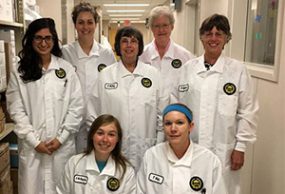
Virginia Division of Consolidated Laboratory Services
Georgia Public Health Laboratory, Bureau of Public Health Laboratories – Florida Department of Health, Division of Consolidated Laboratory Services, Richmond, Virginia
Hurricane Maria made landfall in Puerto Rico on September 20, 2017, causing significant damage to the Puerto Rico Department of Health (PRDOH) infrastructure, including laboratory buildings and equipment, rendering them largely inoperable. Consequently, PRDOH was unable to detect and diagnose tuberculosis (TB) among Puerto Rico’s 3.5 million people. A collaboration with the PRDOH (Public Health Laboratory and TB Control Program); CDC Division of Tuberculosis Elimination Laboratory Branch; CDC Emergency Operations Center Laboratory Team; and the Association of Public Health Laboratories resulted in the implementation of a temporary transport system for Puerto Rico’s TB specimens from Puerto Rico to CDC.
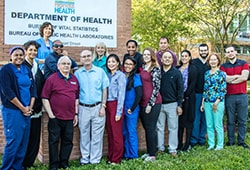
Florida Bureau of Public Health Laboratories
CDC is the triage site for shipment of Puerto Rico’s specimens to Georgia, Florida, and Virginia public health laboratories (PHL) to support diagnostic and confirmatory testing. Between October 2017 and early February 2018, PRDOH has received, packaged, and shipped 231 TB specimens to CDC for referral to the three state PHLs who then tested and reported results. Georgia, Florida, and Virginia PHL support for Puerto Rico’s TB testing needs after Hurricane Maria allowed PRDOH to reestablish clinical testing and surveillance of TB while awaiting the rebuilding and reinstatement of laboratory services. With results from these PHL, PRDOH continued to diagnose and treat TB cases, investigate TB cases, identify additional suspect cases, and monitor patients currently on treatment. Without the collaboration of the PHLs and the PRDOH, TB testing to inform patient care and public health interventions would not have occurred.
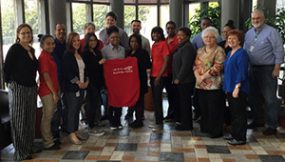
Georgia Public Health Laboratory
Establishing relationships internally and externally among organizations with similar missions is key when preparing for potential emergencies in which clinical testing and surveillance could be compromised. Discussing and developing a Continuity of Operations Plan to collaborate among one another for diagnostic and referral testing is important for public health laboratories and TB Control Programs. This successful collaboration highlights the strong relationships among U.S. public health laboratories and the support available for one another during challenging times.

Jerry Jew, M.D. has been an exceptional leader and champion of TB prevention. Every day in the North East Medical Services (NEMS) community clinics, which annually serve over 65,000 Asian-Americans in California, he focuses on meeting the needs of people at increased risk for TB in the United States. He has implemented numerous activities to promote TB elimination in the NEMS clinics and beyond, including:
- Implementing a TB risk assessment in the clinical setting and electronic health record;
- Developing innovative solutions within his large community clinic system to streamline TB testing and treatment;
- Sharing his time and expertise with state and national TB agencies to give feedback on how to successfully engage frontline providers and health systems in a TB prevention and elimination initiative; and
- Participating in and presenting his successes at the California TB Elimination Advisory Committee (CTEAC) meetings.Dr. Jew is a model for other providers in the NEMS clinics. He conducts TB prevention trainings and invites training from outside partners to ensure the NEMS clinicians are fully educated about the most up-to-date TB testing and treatment options. He regularly provides feedback to the clinic physicians on their performance related to TB prevention. Dr. Jew is an enthusiastic partner of public health at the local and state levels. He has shared his success stories and his wisdom with the CDC, the California Department of Public Health, the San Francisco TB Program and other TB elimination partners on how to successfully engage clinicians and communities in expanding latent TB infection testing and treatment. Overall, he has deep insight and experience working with health care systems, electronic health record systems and public health policy, all of which benefit the TB elimination efforts in the state of California.
Dr. Jew is a true TB elimination champion as he has so much to share with his colleagues in primary care clinics and public health. He has the clinical expertise, as well as the business acumen, to conduct TB prevention efforts humanely, efficiently and routinely. He is a persuasive leader and educator who is willing to share the how-to of his successes with external partners. Dr. Jew cares deeply for the large Asian community that NEMS serves. Dr. Jew is passionate about eliminating TB and creating innovative solutions to address the barriers in health care, not only California but also the nation. Dr. Jew is an exemplary TB champion.
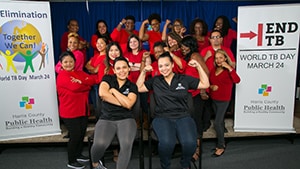
In 2016, Texas ranked fourth in the nation for tuberculosis (TB) disease burden, with 1,250 cases of active TB disease (4.5 per 100,000 population). Harris County, Texas jurisdiction (not including City of Houston) had a TB case rate of 4.4 per 100,000 population, over 65% higher than the national rate (2.9 per 100,000 population). Harris County Public Health (HCPH) implemented Video Directly Observed Therapy (VDOT), an innovative asynchronous smart phone-based approach that allows patients to record TB medication doses remotely, in addition to ongoing traditional Directly Observed Therapy (DOT) for TB treatment, where a health care worker monitors doses in person
On August 26, 2017, Hurricane Harvey made landfall in Harris County. With the forewarning of Harvey, the Champions from the Tuberculosis Elimination Program continued to use VDOT in accordance to the guidelines and preparation plans set forth by HCPH. During the hurricane, VDOT enabled patients to continue TB treatment by submitting videos.
During Hurricane Harvey, a total of 108 patients were receiving TB treatment in Harris County. Of those, 61 (57%) were on VDOT and 47 (43%) were on DOT. VDOT patients were advised to continue treatment by submitting their videos to the Health Insurance Portability and Accountability Act (HIPPA) compliant platform, which were reviewed daily by TB staff. The 47 DOT patients were advised to self-medicate, which does not count towards their treatment completion.
As a result, 59 out of 61 (97%) of VDOT patients were able to continue their TB treatment remotely with no interruptions. Two VDOT patients with interruptions resumed treatment after 2 and 12 days, respectively. Due to disruption in DOT services, the 47 DOT patients had their treatment prolonged an average of 16 days.
Despite the disruption in health care system and delivery due to Harvey, VDOT was proven beneficial for the continuation of TB treatment in a disaster. VDOT use during Hurricane Harvey has generated traction in public awareness for TB through recognition in Politico Magazine and CDC’s MMWR Notes from the Field. VDOT has improved TB treatment in Harris County by reducing the sigma of TB and providing autonomy, flexibility, and confidentiality to patients at a lower cost, while maintaining high treatment adherence rates. Given the benefits VDOT has for ancillary TB treatment, VDOT has the capacity to improve TB patient treatment and access to care across the nation.
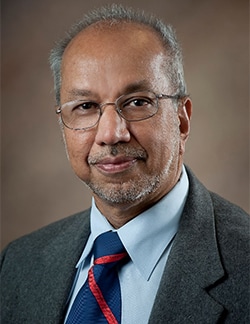
Dr. Juzar Ali, Medical Director of the Louisiana State University Health Sciences Center (LSUHSC)-Wetmore Foundation Program for Mycobacterial Diseases, in New Orleans along with his team, (Nicole Lapinel, MD; Margarita Silio, MD; Maureen Vincent CLSS; Chris Brown; and Malcolm Light) have collaborated with the local hospital and community systems to ensure streamlined care of adult and pediatric TB patients. These programmatic improvements have led to better coordination of care of TB patients to and from hospitals, emergency rooms, primary care clinics and homeless shelters. They have also started a Video Direct Observed therapy (VDOT) pilot program for patients with latent TB infection. Further, they have reached out to primary care clinics and established a working relationship with the community outreach team of Tulane and LSU medical students volunteering in the homeless shelters. These efforts have created a process of referral, follow up of TB patients at the community level, and helped establish a model of a Wetmore TB Medical Home for these patients.
These efforts have increased awareness of TB management, assisted with TB testing, and triage processes for their clients. It has streamlined operational and referral workflow and reduced redundancy and cost of care. The VDOT program, in its pilot phase, has reduced the inconvenience to the clients, improved staff work productivity time, and decreased the use of system resources and personnel. The clinic operations as described above have identified challenges patients face in resource-challenged systems and in settings where TB elimination may be difficult because of rapid staff turnover and frequent mobility of patients. The TB Medical Home concept also underscores the importance of family in treatment completion, and ensures a multidisciplinary support and case management.
This project underscores the importance of “connecting the dots” of TB care with primary and community care, in addition to ensuring treatment completion. This helps in closing the healthcare delivery loop for individual clients and patients in TB elimination and establishes access pathways with primary care and specialty care if needed. It streamlines care coordination between clinical, academia, community, and public health systems. Improved overall patient care, enhanced patient engagement, experience, reduction in redundancy, and cost of care are some of the potential overall benefits of constructing a TB Medical Home concept in addition to the ability to focus on aggressive comprehensive treatment, testing contacts, and follow through of TB patients with other co-morbid conditions.
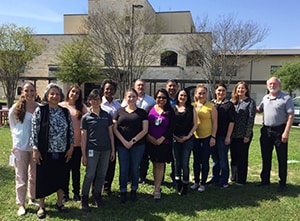
Breathe Easy South Texas (BEST) represents a partnership between the Texas Department of State Health Services (DSHS), the San Antonio Metropolitan Health District (SAMHD), UT Health at San Antonio, UT Tyler, and the Heartland National TB Center. Together, these key partners are working to grow a network of urban and suburban/rural clinics/organizations that will incorporate the identification and treatment of latent TB infection in populations at increased risk for latent TB infection into their practices. The uniqueness of this project includes both a rural as well as an urban component. The rural component deals mainly with smaller medical clinics in the surrounding outside of Bexar County and San Antonio.
With funding from the Texas Medicaid 1115 Waiver, the Breathe Easy South Texas (BEST) program was created and implemented to increase detection, treatment, and treatment adherence rates, and to encourage the use of more advanced testing techniques and treatment regimens. The BEST executive leadership team is actively striving for a TB-free South Texas. The BEST Project is making an impact in the South Texas Region with a dual approach to TB elimination:
- Strengthening existing systems that interrupt ongoing tuberculosis transmission and
- Increasing efforts focused on targeted testing and treatment of latent tuberculosis infections, particularly increased-risk populations including non-U.S.-born, diabetics, immunocompromised individuals, and persons experiencing homelessness or living in congregate settings.
Since the BEST Project began in 2014, TB cases have decreased by 22.5%. The BEST project not only met its goal of identifying and testing 3,500 high-risk unduplicated individuals per year for the initial 3 years (10,500 total), it exceeded. To date, the BEST project has screened over 14,000 people for TB. Our positivity rate is 8.53% with over 526 individuals testing positive. The positivity rate is indicative of the tremendous success we have had targeting populations at an increased risk for TB.
One of the biggest challenges has been to move those testing positive for TB infection into the treatment stage. This requires the individual to obtain a chest X-ray and come to the clinic for clinical assessment by physicians and nurses. The BEST project currently has over 170 people starting treatment for latent TB infection, with over 142 people completing treatment, for a minimum completion rate of 83.5%. This rate will continue to increase to over 90% as these individuals complete their 12-week regimen of medications. BEST’s focus on populations with an increased risk of TB has uncovered significant numbers of patients with latent TB infection in need of treatment that otherwise may not have been detected. The BEST Project will continue to expand activities in an effort to continue eliminate TB locally and regionally.
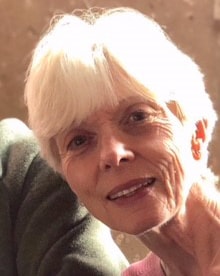
Dr. Barbara Seaworth is the Medical Director for the Heartland National Tuberculosis Center in San Antonio, Texas. Dr. Seaworth has worked tirelessly to improve care and prevention efforts for multidrug-resistant tuberculosis (MDR TB) along the Texas-Mexico border, seeking ways to collaborate with health workers on both sides of the border, always with a focus on the well-being of her patients and their families. In an effort to extend the impact of her work, she has become engaged in advocacy efforts. Many organizations have recognized Dr. Seaworth’s outstanding contributions to TB elimination, and she is a regular member of national and international expert panels. Her efforts have brought much needed attention to the problems and difficulties posed by MDR TB therapy for both providers and patients, and have highlighted the unaddressed challenges of MDR TB prevention. Dr. Seaworth is a true example of how hard work and dedication matter, and can help efforts to achieve TB elimination.
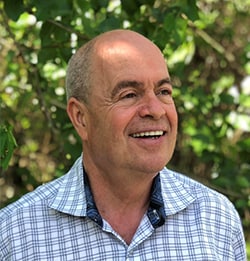
Preston Witt is the Chief Services Officer for Harmony House. Preston oversees services at Langston House, a joint-ventured facility between the City of Houston TB program and Harmony House Inc. Langston House houses infectious or displaced TB patients during their infectious period. It is one of the few facilities of its kind operating within the United States.
Preston Witt has maintained a tremendous relationship with the City of Houston TB Program for well over 10 years. During this time, the Houston Health Department TB program has relied on Preston to resolve a host of TB patient-related issues including; picking up infectious patients at the hospital and transporting them to Langston House; assuring patients attend their medical appointments; and when necessary convincing those infectious patients who want to leave Langston House to stay. Any one of these accomplishments is remarkable and he does them all on a regular basis. In addition, Preston has been invited to CDC over the years to share his expertise with the homeless community. He maintains leadership roles with various Houston-based homeless coalitions.
The treatment completion rate of homeless patients admitted to Langston House is a remarkable 85%. Much of the credit belongs to Preston and his ability to connect with TB patients. Preston convinces the infectious TB patients to stay rather than returning to a shelter where they could possibly spread TB to others. There have been just two shelter-related contact investigations in Houston since Langston House was opened 9 years ago. For his commitment and dedication to TB, Preston Witt as a U.S. TB Elimination Champion.

Dr. Loeffler serves as the pediatric TB expert for Oregon. She is an amazing resource to all community pediatricians and public health on the diagnosis and treatment of latent TB infection and TB disease. Dr. Loeffler makes herself easily available and provides clear, compassionate, and thoughtful guidance to all. She works regularly with the TB Program at the Oregon Health Authority, and county health departments. As a local practicing pediatrician and national pediatric TB expert Dr. Loeffler is the health department’s go-to physician for questions ranging from minor abnormalities on screening chest x-rays to the management of medically and socially complex active TB disease patients, including a patient with multidrug resistant TB (MDR TB). Dr. Loeffler coordinated care for this patient across multiple entities and was a strong patient advocate, spending many hours with the patient and the family providing encouragement and support. She has also provided directly observed therapy for the parent of a child in her care and even delivered an exercise bike to the home of a patient who needed it for rehabilitation. She approaches all of these situations with grace and wisdom and essentially functions as an extension of the health department.
Dr. Loeffler keeps children and their families at the center of her practice. She is a natural teacher and shares her expertise and experience regularly via webinars and other trainings. She assist the county program with writing guidance and creates many education materials for the Curry International TB Center. Dr. Loeffler has trained TB program staff on pediatric TB, providing staff with the knowledge to share with health care partners and community-based organizations that support local immigrant and refugee populations. Her patient-centered approach coupled with the best of TB science creates a model to emulate in interactions with individuals with TB in the community. She works tirelessly to assure the best treatment outcomes, shifting norms and expectations for what successful TB treatment and prevention look like. She includes TB program staff in her consultation of her fellow experts to share the benefit of the best minds in the country with respect to TB elimination. These conversations also serve as a humbling reminder that curing TB is an art and a science, and very much a team sport.
The impact Dr. Loeffler’s efforts have made on the community are multiple. The outstanding care she provides to children with TB has minimized the spread of TB in the community and saved lives. She is a trusted resource for physicians and county health departments; helping to increase their confidence in managing TB. Dr. Loeffler’s person and family centered approach to care is a vital part of local and statewide efforts to prevent and cure this disease. TB elimination is possible when health care providers, the public health system and other community partners team up to support individuals and families affected by TB. Dr. Loeffler’s passion for TB elimination and dedication to her patients is a constant reminder of the importance of this work. Dr. Loeffler excels at clinical consultation and patient advocacy for children who often have few resources. As a clinical consultant, Dr. Loeffler provides an ongoing, stable presence, which can be relied upon. This is essential in times of rapid staff turnover and decreasing TB expertise in the community. As a patient advocate, Dr. Loeffler refuses to give up and will always fight to assist her patients with whatever is needed to help them successful complete treatment.